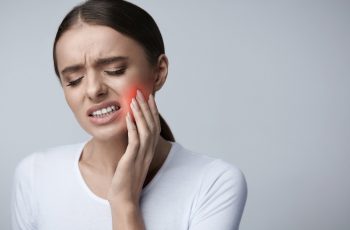
Many women experience vaginal discharge at some point in their lives, but sometimes it can be difficult to determine whether the discharge is normal or indicative of a more serious problem. Bacterial vaginosis (BV) is a type of vaginal inflammation that occurs when the balance of good and bad bacteria in the vagina becomes disrupted. BV is usually characterized by a fishy odor, unusual discharge, and burning or itching. In some cases, women with BV may also experience pain during urination or sex.
While BV is not technically a sexually transmitted infection (STI), it is believed to be caused by an overgrowth of bad bacteria in the vagina. This overgrowth can be triggered by a number of things, including unprotected sex, douching, and using scented products in or around the vagina. Fortunately, BV is relatively easy to treat with antibiotics. However, if left untreated, it can increase a woman’s risk of developing other STIs.
What Causes BV?
The vaginal microbiome is made up of many different types of bacteria. Usually, there are more “good” bacteria than “bad” bacteria. Good bacteria help keep the pH balanced and prevent bad bacteria from growing too much. When there are too many bad bacteria, it can cause an infection.
BV might happen when something changes the normal balance of bacteria in the vagina. This includes:
• Douching: Douching can disrupt the delicate balance of good and bad bacteria in the vagina, which can lead to BV.
• Sexual activity: Women who have multiple sexual partners or who have sex with women are more likely to develop BV. This is because sexual activity can introduce new bacteria to the vagina.
• Certain types of contraception: Using a diaphragm or spermicide for contraception can increase your risk of developing BV.
• IUD: Women who have an IUD (intrauterine device) for contraception are more likely to develop BV.

How Do I Know If I Have BV?
Most women with BV do not have any symptoms, but some might notice:
1. Gray, white, or yellow discharge
The discharge caused by bacterial vaginosis is often described as being thin and watery. It may also be yellow, gray, or white. Some women with the infection notice a strong fishy odor, especially after intercourse.
2. Burning during urination
Bacterial vaginosis can cause burning and itching around the opening of the vagina and the urethra, the tube that carries urine from the bladder to the outside of the body. The burning sensation is often worse when you urinate right after sex.
3. Itching around the vagina
Itching is another common symptom, although not all women experience it. The itching may be mild or severe.
4. Swelling of the vulva
The vulva is the external part of a woman’s genitals. It includes the opening of the vagina, the clitoris, and the labia (the folds of skin around the vagina). Bacterial vaginosis can cause swelling and redness of these tissues.
5. Pain during intercourse
Bacterial vaginosis can cause pain during sexual intercourse because of the inflammation it causes in the vagina and vulva. This pain may worsen if you have deep Penetration during intercourse.

Betadine for Bacterial Vaginosis
Betadine is an antiseptic solution that contains iodine. It has been shown to be effective in treating bacterial vaginosis. In one study, women who used betadine for BV had a 70% success rate in getting rid of their symptoms.
Another study found that women who used betadine were less likely to have a recurrence of BV than women who did not use betadine. If you are looking for a way to get rid of your bacterial vaginosis, betadine may be worth a try.

How to Use Betadine for Bacterial Vaginosis
If you want to try using betadine for bacterial vaginosis, there are a few things you need to know.
First, you should only use betadine if you have been diagnosed with BV by your doctor. Betadine will not work for other types of vaginal infections, such as yeast infections or trichomoniasis.
Second, betadine comes in different forms, including swabs, suppositories, and solutions. The type you use is up to you. Some women prefer solutions because they are easy to use and require no insertion into the vagina. Others prefer swabs because they are less messy.
Third, when using any form of betadine for bacterial vaginosis, be sure to follow the directions on the package carefully. You should also talk to your doctor before using betadine if you are pregnant or breastfeeding.
Fourth, while betadine is generally safe and effective, there are a few side effects that you should be aware of before using it. These side effects include irritation, burning, and staining of clothing. If you experience any severe side effects after using betadine products for your bacterial vaginosis—such as difficulty breathing—stop using them immediately and call your doctor right away.

Here’s a step-by-step guide on how to use Betadine for bacterial vaginosis.
Step One: Wash your hands thoroughly with soap and water. This will help to prevent the spread of germs and ensure that the Betadine will be effective.
Step Two: Apply Betadine to a clean cotton swab or cotton ball. Gently apply the Betadine to the affected area, being careful not to insert it into the vagina. You may experience a stinging sensation when applying Betadine, but this should subside within a few seconds.
Step Three: Allow the Betadine to dry completely before resuming normal activities. Do not wash the area with soap or water for at least six hours after application. You may notice that the area turns brown after drying; this is normal and will fade over time.
Repeat this process once or twice a day until symptoms have subsided. If you do not see any improvement after a week of treatment, consult your healthcare provider.

Is Betadine Safe?
Overall, betadine is considered safe for most people when used as directed. However, there are a few precautions that should be taken into consideration. First, it’s important to avoid contact with the eyes. If betadine does get in your eyes, be sure to rinse them out with water immediately and seek medical help if necessary.
Also, women who are pregnant or breastfeeding should avoid using betadine unless directed to do so by their healthcare provider. Additionally, those with thyroid disease or diabetes should use betadine with caution as it can worsen these conditions.

Side Effects of Betadine
The most common side effect of Betadine is local irritation. This can cause burning, itching, and redness. If you experience any of these symptoms, discontinue use and contact your doctor. Allergic reactions are also possible, though rare. Symptoms of an allergic reaction may include hives, difficulty breathing, and swelling of the face, lips, or tongue. If you experience any of these symptoms, seek medical attention immediately.
Another potential side effect is contact dermatitis. Contact dermatitis is a skin reaction that occurs when the skin comes into contact with an irritant. Symptoms may include redness, itching, and blistering. If you experience any of these symptoms, discontinue use and contact your doctor.
Rare but serious side effects may also occur with Betadine treatment. These side effects include severe stomach pain or cramping and vaginal bleeding or spotting. If you experience any of these symptoms, discontinue use immediately and contact your doctor.

How Betadine Swabs Work
There is no definitive answer on how exactly betadine swabs work to treat bacterial vaginosis, but the most likely explanation is that the iodine in the swabs helps to kill the overgrowth of bacteria that is causing the symptoms. Iodine has been shown to be an effective antimicrobial agent against a wide variety of bacteria, so it stands to reason that it would be effective against BV as well.

Why Betadine Swabs Are Better than Antibiotics
There are a few reasons why betadine swabs are a better treatment option than antibiotics for bacterial vaginosis. First of all, antibiotics can cause side effects like nausea and diarrhea. They can also make you more susceptible to yeast infections. Betadine swabs, on the other hand, are much gentler on your body and don’t have any major side effects.
Another reason why betadine swabs are a better treatment option is that they’re more effective than antibiotics. While antibiotics may work for some women, they don’t work for everyone. In fact, research has shown that 30-50% of women who take antibiotics for BV will have the condition come back within three months. Betadine swabs, on the other hand, have been shown to be effective in 95% of cases.

Finally, betadine swabs are a better treatment option because they don’t contribute to antibiotic resistance. Antibiotic resistance is when bacteria become resistant to the effects of antibiotics over time. When this happens, those antibiotics become less and less effective at treating infections. Betadine swabs don’t contribute to antibiotic resistance because they kill bacteria in a different way than traditional antibiotics do.

Are Betadine Swabs Safe?
Yes, betadine swabs are safe for most women to use. However, if you are pregnant or breastfeeding, you should check with your doctor before using any home remedies, including betadine swabs. Additionally, if you have any allergies or sensitivities, you should check the ingredients list carefully before using betadine swabs. If you experience any irritation or other adverse effects after using betadine swabs, stop using them and consult your doctor.

Final Thoughts
If you’re looking for an effective and safe treatment for bacterial vaginosis, betadine swabs are a great option. They’re more effective than antibiotics and don’t have any major side effects. Betadine swabs are also a good choice if you’re pregnant or breastfeeding. However, if you have any allergies or sensitivities, you should check the ingredients list carefully before using betadine swabs. If you experience any irritation or other adverse effects after using betadine swabs, stop using them and consult your doctor.
Frequently Asked Questions (FAQs)
What does betadine do to bacteria?
Betadine microbicides eliminate yeast, fungi, viruses, protozoa, and bacteria, including gram-positive and gram-negative bacteria. When blood, pus, serum, and necrotic tissue are present, microbicidal activity continues and lasts longer than it does with iodine.
Is Betadine an antibiotic?
No, Betadine is not an antibiotic. It is an antiseptic that kills bacteria on the surface of the skin. It will not kill bacteria inside the body.
How long does bacterial vaginosis last?
Even though the infection might go away on its own, most doctors treat it with antibiotics. You may have been given pills or cream for your vaginal area. Bacterial vaginosis usually goes away in 5 to 7 days after treatment.
How do you know if BV is gone?
If you are pregnant, you should get a test one month after treatment to make sure that BV is no longer in your body. A sample (a swab) of the discharge from your vagina is taken. This is tested to make sure you no longer have BV.




